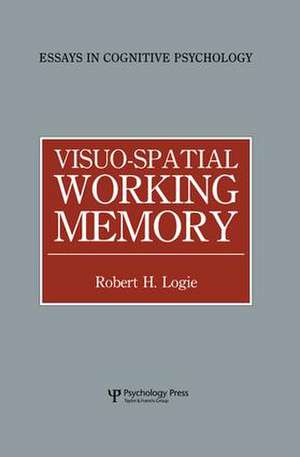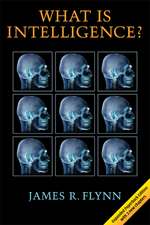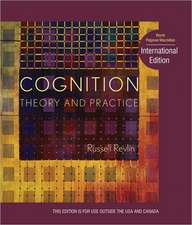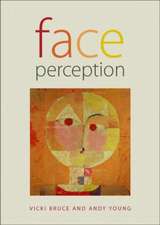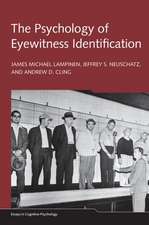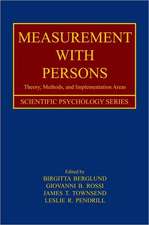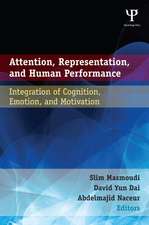Visuo-spatial Working Memory: Essays in Cognitive Psychology
Autor Robert H. Logieen Limba Engleză Paperback – 25 iun 2015
There is now a strong case for the claims of working memory in the area of phonological and articulatory functions, all of which appear to contribute to everyday activities such as counting, arithmetic, vocabulary acquisition, and some aspects of reading and language comprehension. The claims for visual and spatial working memory functions are less convincing. Most notable has been the assumption that visual and spatial working memory are intimately involved in the generation, retention and manipulations of visual images. There has until recently been little hard evidence to justify that assumption, and the research on visual and spatial working memory has focused on a relatively restricted range of imagery tasks and phenomena.
In a more or less independent development, the literature on visual imagery has now amassed a voluminous corpus of data and theory about a wide range of imagery phenomena. Despite this, few books on imagery refer to the concept of working memory in any detail, or specify the nature of the working memory system that might be involved in mental imagery.
This essay follows a line of reconciliation and positive critiquing in exploring the possible overlap between mental imagery and working memory. Theoretical development in the book draws on data from both cognitive psychology and cognitive neuropsychology. The aim is to stimulate debate, to address directly a number of assumptions that hitherto have been implicit, and to assess the contribution of the concept of working memory to our understanding of these intriguing core aspects of human cognition.
| Toate formatele și edițiile | Preț | Express |
|---|---|---|
| Paperback (1) | 460.69 lei 6-8 săpt. | |
| Taylor & Francis – 25 iun 2015 | 460.69 lei 6-8 săpt. | |
| Hardback (1) | 997.27 lei 6-8 săpt. | |
| Taylor & Francis – 28 noi 1994 | 997.27 lei 6-8 săpt. |
Din seria Essays in Cognitive Psychology
-
 Preț: 386.43 lei
Preț: 386.43 lei - 18%
 Preț: 348.02 lei
Preț: 348.02 lei -
 Preț: 461.50 lei
Preț: 461.50 lei -
 Preț: 467.44 lei
Preț: 467.44 lei -
 Preț: 459.71 lei
Preț: 459.71 lei - 25%
 Preț: 370.02 lei
Preț: 370.02 lei -
 Preț: 410.88 lei
Preț: 410.88 lei - 15%
 Preț: 541.72 lei
Preț: 541.72 lei - 18%
 Preț: 998.88 lei
Preț: 998.88 lei - 18%
 Preț: 302.19 lei
Preț: 302.19 lei - 15%
 Preț: 423.28 lei
Preț: 423.28 lei -
 Preț: 482.53 lei
Preț: 482.53 lei -
 Preț: 480.62 lei
Preț: 480.62 lei -
 Preț: 482.94 lei
Preț: 482.94 lei - 48%
 Preț: 233.06 lei
Preț: 233.06 lei -
 Preț: 462.60 lei
Preț: 462.60 lei - 42%
 Preț: 233.06 lei
Preț: 233.06 lei - 18%
 Preț: 1000.27 lei
Preț: 1000.27 lei -
 Preț: 393.63 lei
Preț: 393.63 lei - 41%
 Preț: 236.05 lei
Preț: 236.05 lei -
 Preț: 482.35 lei
Preț: 482.35 lei - 26%
 Preț: 765.23 lei
Preț: 765.23 lei -
 Preț: 343.77 lei
Preț: 343.77 lei -
 Preț: 314.59 lei
Preț: 314.59 lei -
 Preț: 190.51 lei
Preț: 190.51 lei - 18%
 Preț: 1013.72 lei
Preț: 1013.72 lei - 18%
 Preț: 126.66 lei
Preț: 126.66 lei -
 Preț: 482.53 lei
Preț: 482.53 lei -
 Preț: 483.49 lei
Preț: 483.49 lei - 16%
 Preț: 130.21 lei
Preț: 130.21 lei -
 Preț: 465.39 lei
Preț: 465.39 lei - 31%
 Preț: 765.45 lei
Preț: 765.45 lei -
 Preț: 483.49 lei
Preț: 483.49 lei
Preț: 460.69 lei
Nou
Puncte Express: 691
Preț estimativ în valută:
88.16€ • 91.70$ • 72.78£
88.16€ • 91.70$ • 72.78£
Carte tipărită la comandă
Livrare economică 15-29 aprilie
Preluare comenzi: 021 569.72.76
Specificații
ISBN-13: 9781138876934
ISBN-10: 1138876933
Pagini: 176
Dimensiuni: 152 x 229 x 13 mm
Greutate: 0.25 kg
Ediția:1
Editura: Taylor & Francis
Colecția Psychology Press
Seria Essays in Cognitive Psychology
Locul publicării:Oxford, United Kingdom
ISBN-10: 1138876933
Pagini: 176
Dimensiuni: 152 x 229 x 13 mm
Greutate: 0.25 kg
Ediția:1
Editura: Taylor & Francis
Colecția Psychology Press
Seria Essays in Cognitive Psychology
Locul publicării:Oxford, United Kingdom
Public țintă
Postgraduate, Professional, and UndergraduateCuprins
Temporary Memory. Mental Representation. The Visual and the Spatial. Working Memory. Neuropsychology. Assumptions, Reconciliation and Theory Development.
Notă biografică
Department of Psychology, University of Aberdeen, Aberdeen, UK.
Descriere
This essay follows a line of reconciliation and positive critique in exploring the possible overlap of mental imagery and working memory. Theoretical development in the book draws on data from both cognitive psychology and cognitive neuropsychology.
